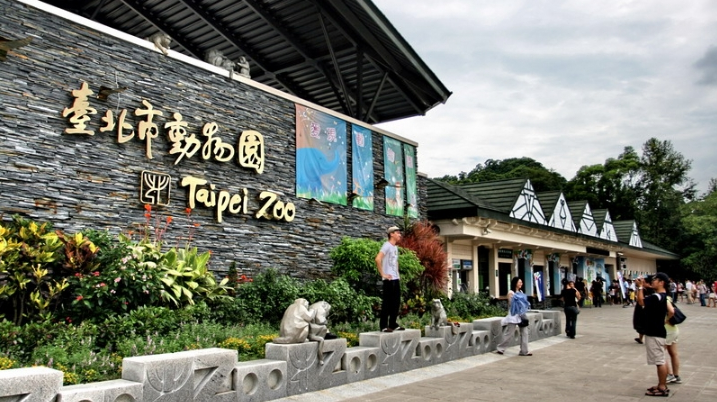In May 2012, we were honored to be invited to participate in a training program held at the Taipei Zoo, which impressed us immensely.
The Taipei Zoo is located on the Muzha Subway Lines last stop. When getting off the subway a 40m high giraffe smiles down on you. Originally, this giraffe was the chimney of a neighboring factory. But as it disrupted the beauty of the zoo, an artist dressed it up. Thus it became the tallest giraffe in Taipei, and the zoo’s best advertisement.
The zoo is situated in a natural secondary growth forest. The zoo’s enclosures are all designed to mimic the ecology of each species’ native habitat. The outdoor exhibits include Formosan Animals, Asian Tropics, Desert Animals, Australian Animals, Africa, Temperate Zone Animals, and Bird World. The animals live unrestricted in their enclosures. Each enclosure is designed so that the walls disappear into the design of the enclosure itself, so that visitors almost don’t notice them. Zoo designers added special hidden dens to each enclosure in which the animals can hide from visitors. The herbivore dens are tucked under the visitor walkways.
The Formosan Animal Area is on the right side of the entrance which reflects the zoo’s attention to keeping native animals. Taiwan’s well-known animals include sika deer, Asiatic black bears, rhesus monkeys, wild boar, and clouded leopards. The population of Taiwanese pangolins in the wild is decreasing and captive breeding is very difficult. Jin Shiqian, Taipei Zoos incumbent director, took the initiative to do a lot of work on keeping pangolins with great results.
The star animals in Taipei are giant pandas Tuan Tuan and Yuan Yuan. They moved from the mainland to Taipei Zoo at the end of 2008. To give the two giant pandas a comfortable and secure environment, a large area of bamboo forests, and more than a 70m2 space was constructed, and includes a bamboo forest and climbing structures. It is separated from visitors by 4cm thick tempered glass. There are also imitation trees and flowers which are used to create a forest-like environment. The space is climate controlled to ensure the pandas do not get too hot or cold. There is also a video monitoring system to monitor the pandas’ day-to-day life. Tuan Tuan and Yuan Yuan attract thousands of visitors every day.
Another star of the Taipei Zoo is a Burmese Asian elephant named Lin Wang who served with the Chinese Expeditionary Force during World War II, and later relocated to Taiwan and moved to the Taipei Zoo in 1954. He died on February 26, 2003, at the age of 86 years old. Lin Wang was the oldest captive elephant in the world. He was also the most famous animal in Taiwan, he was given the nickname Grandpa Lin Wang by the people, and the Taipei Government gave him an honorary citizenship. Nearly every family in Taipei has at least one photo of themselves with Lin Wang. Even though he died nearly almost a decade ago, his specimen still attracts tourists.
There are six indoor exhibition houses in Taipei Zoo including Giant Pandas, Entomology; Amphibians & Reptiles, Nocturnal Animals, and the Koala and Penguin Houses. These animals all require strict climate control of their enclosures. Each of the indoor enclosures is also made to mimic each species natural habitat as much as possible.
The Taipei Zoo is a good example of an educational environment that is working to ensure the safety and welfare of each of their animals.



























